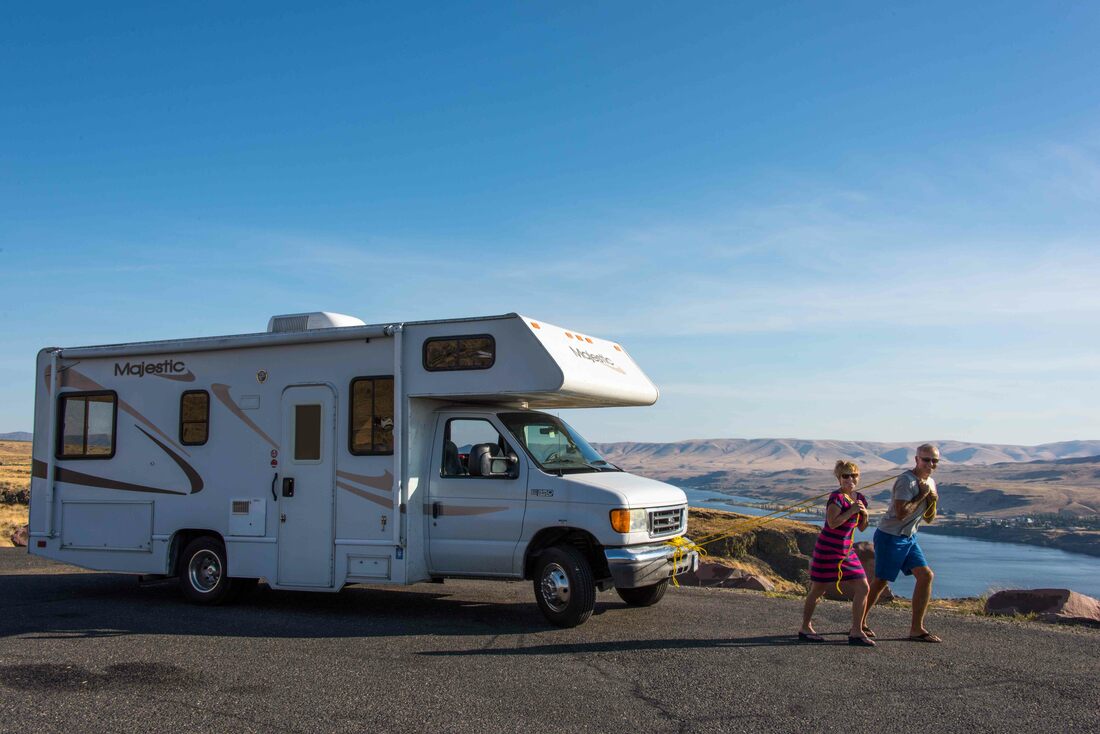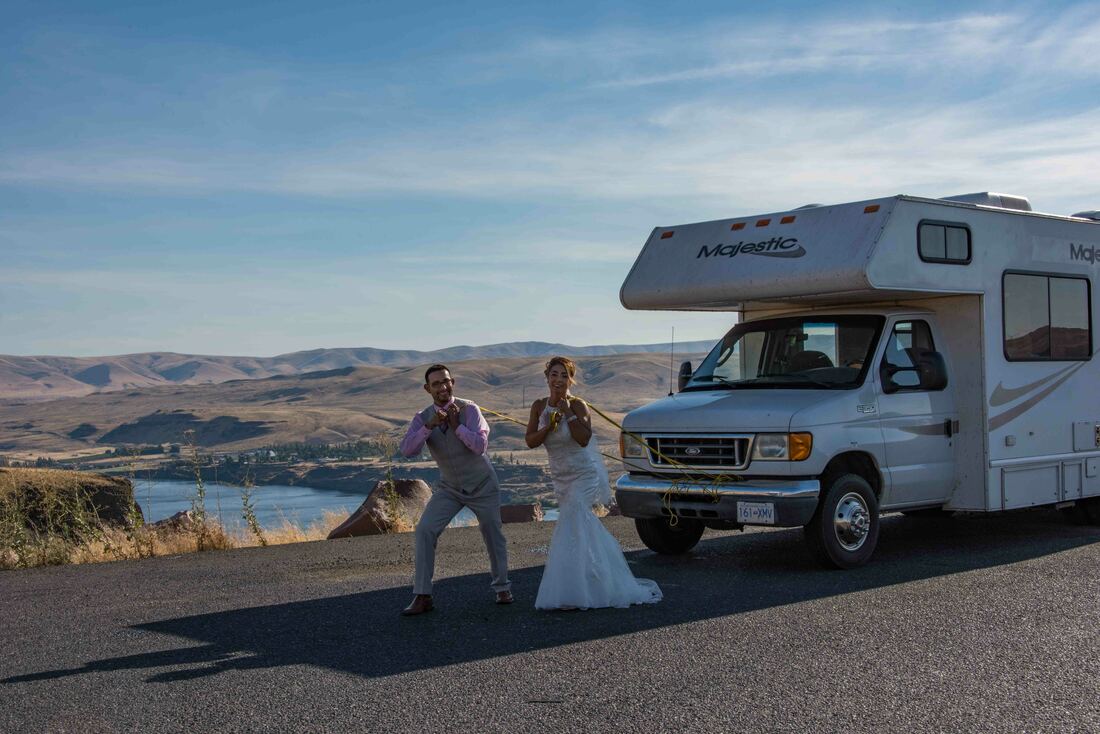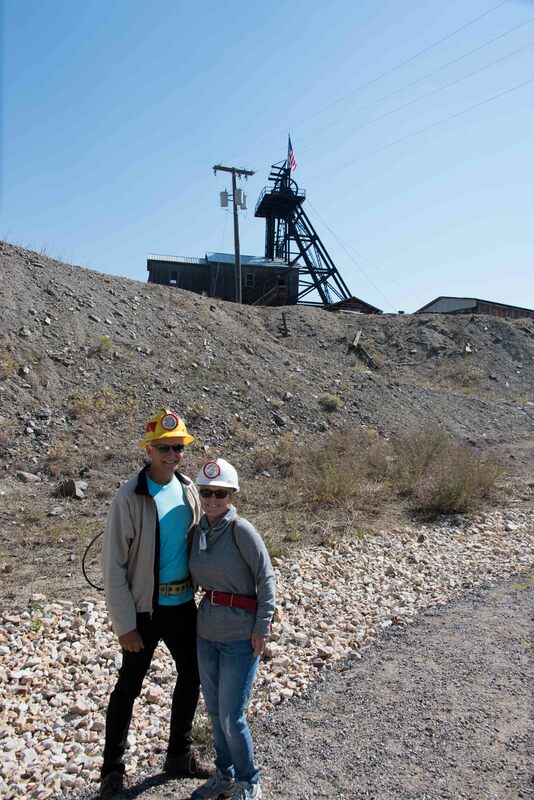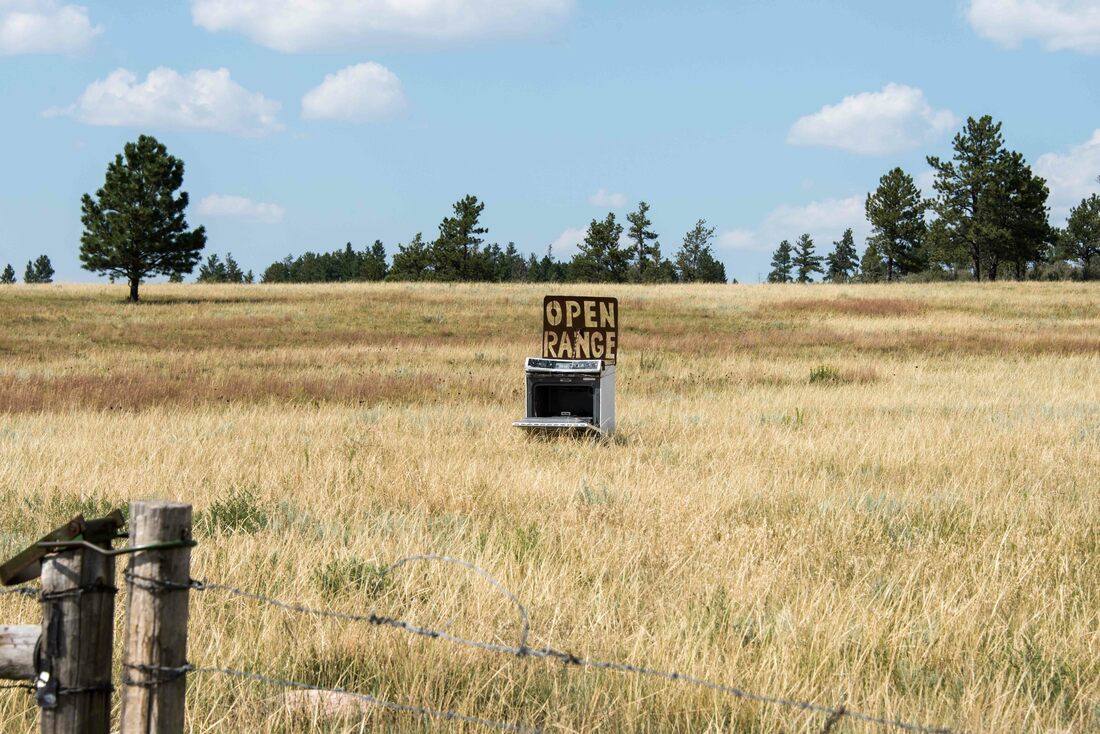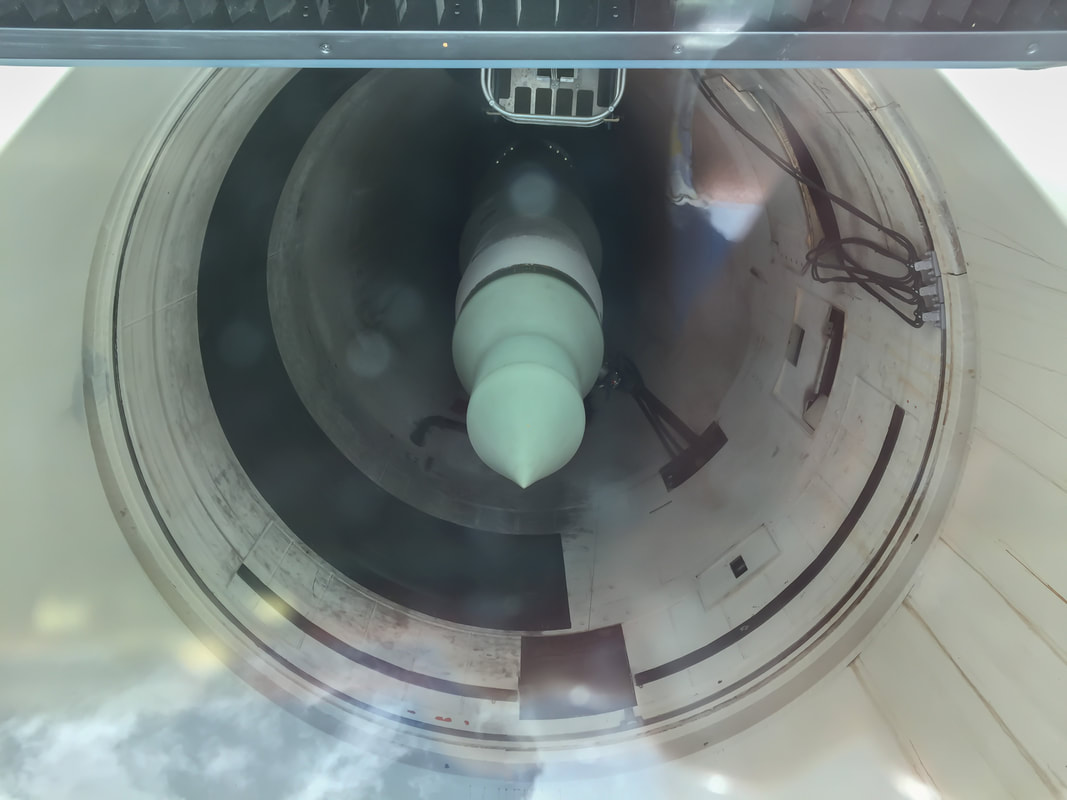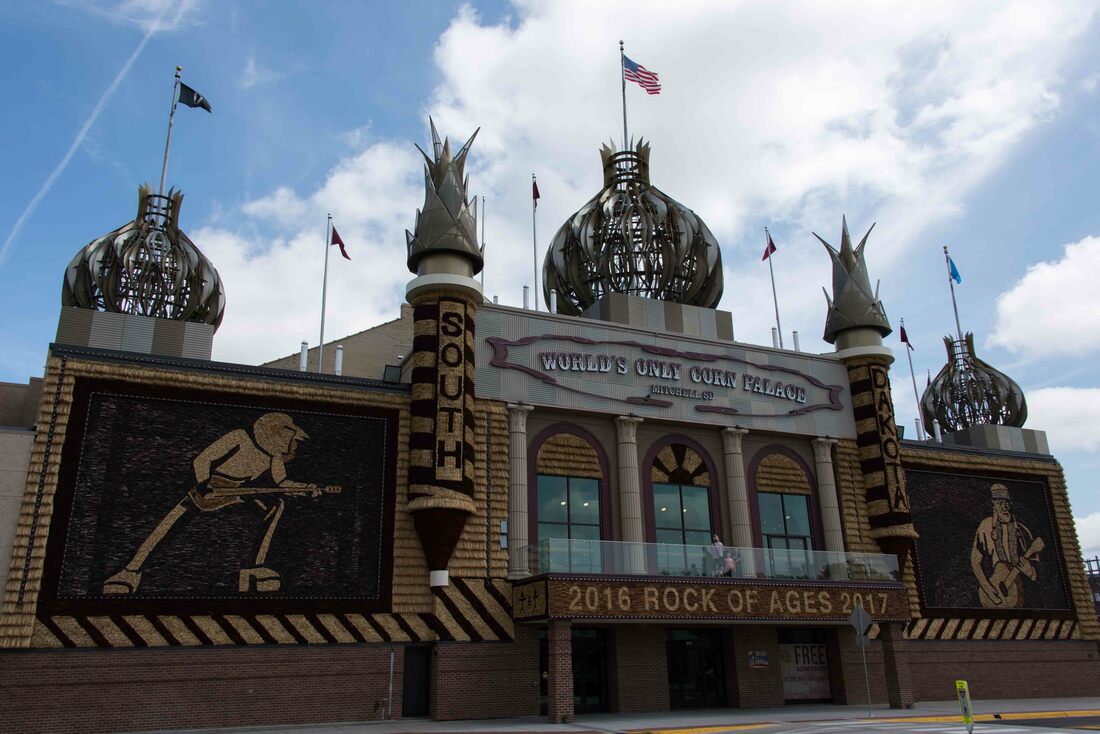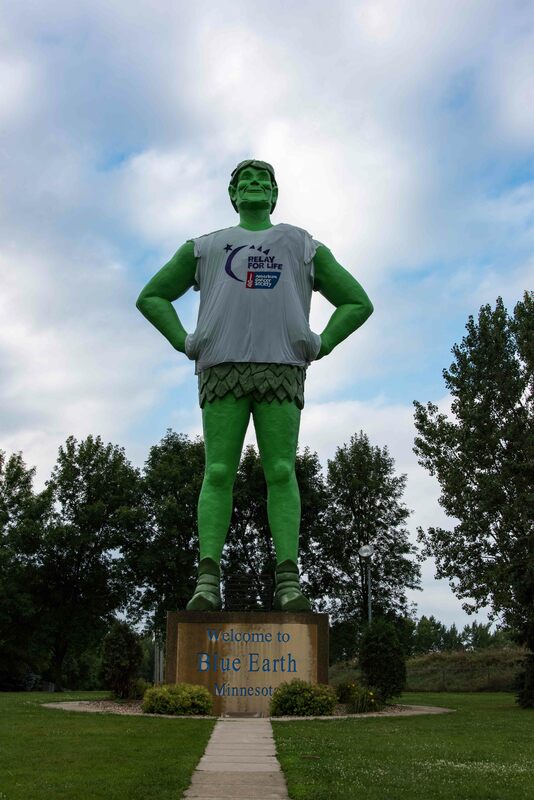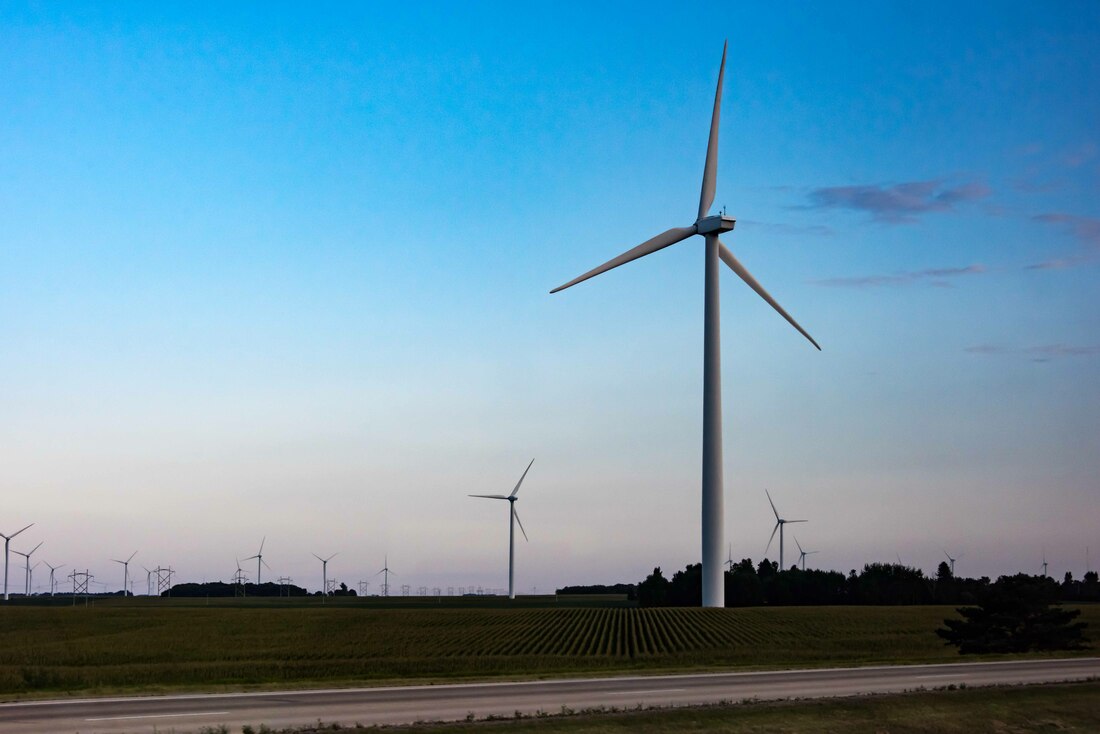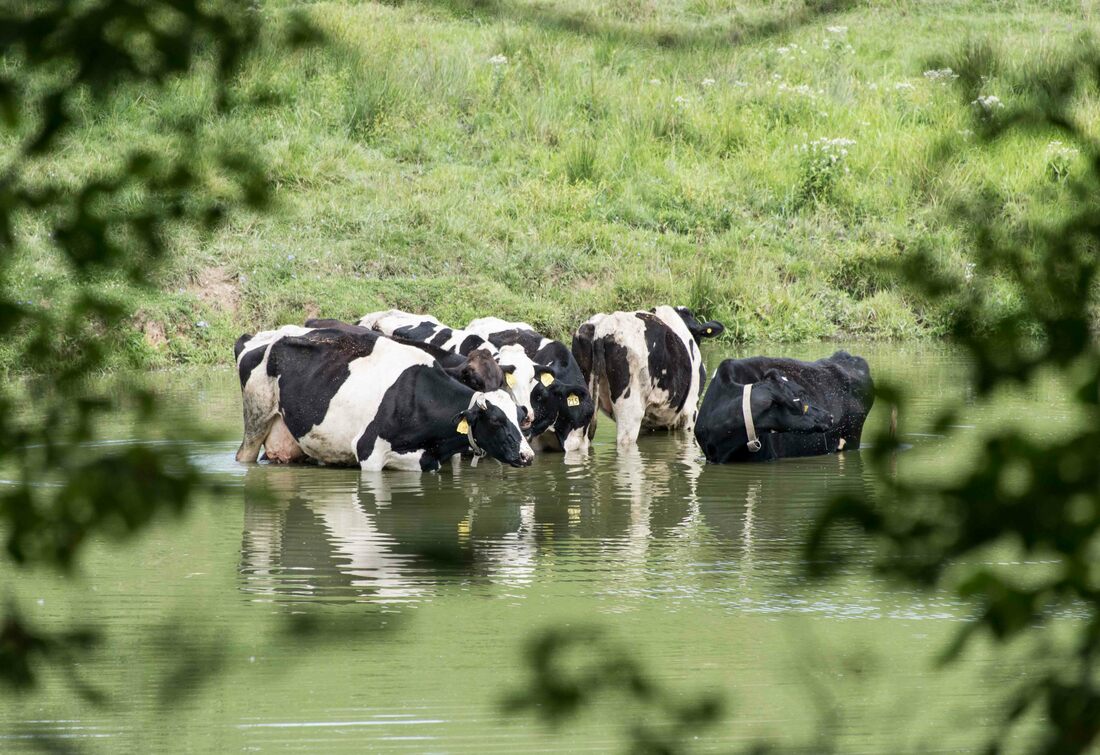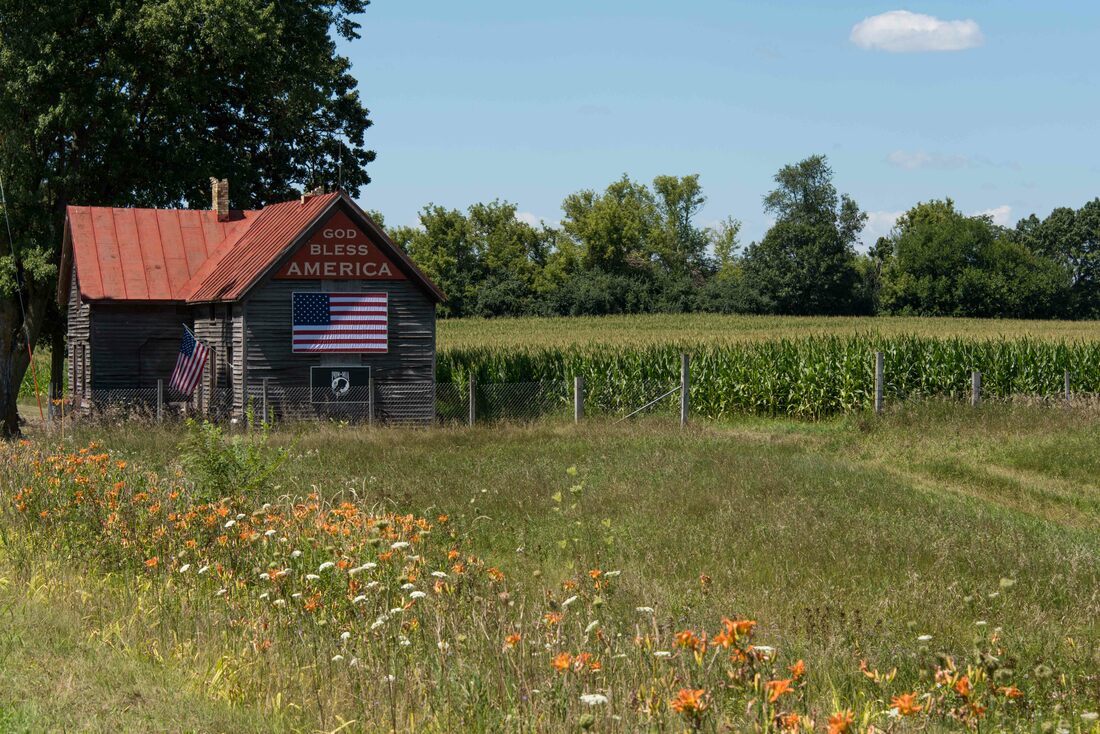Soon we will be home, and we so look forward to seeing family and friends – we’ve missed you a lot! At the same time, it is with some sadness that this will be the last installment from our “happy retirement” 17-month trip. Going forward our plan is to continue to grow these memories as we travel for a few months each year. If you are reading this, it means that amazingly you’ve stuck it out all this time – thank you for joining the adventure! (Aug 21/17)
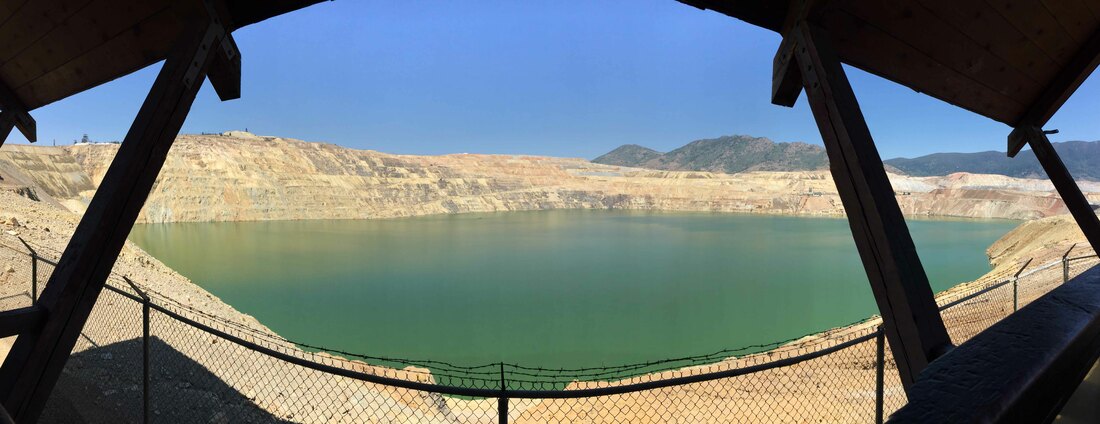
Butte was a town backdropped by the Berkeley Pit, a 1.5-mile-wide former open pit copper mine. As it and other mines in the area were closed in the 1980's, below surface water pumps were turned off allowing groundwater to return. The water has been steadily rising to the point where a filtration plant was built to remove toxins before the water leaches into the nearby river. It’s expected that the process of purifying and releasing the water will need to be carried on indefinitely. (Butte, Montana, Aug 18)
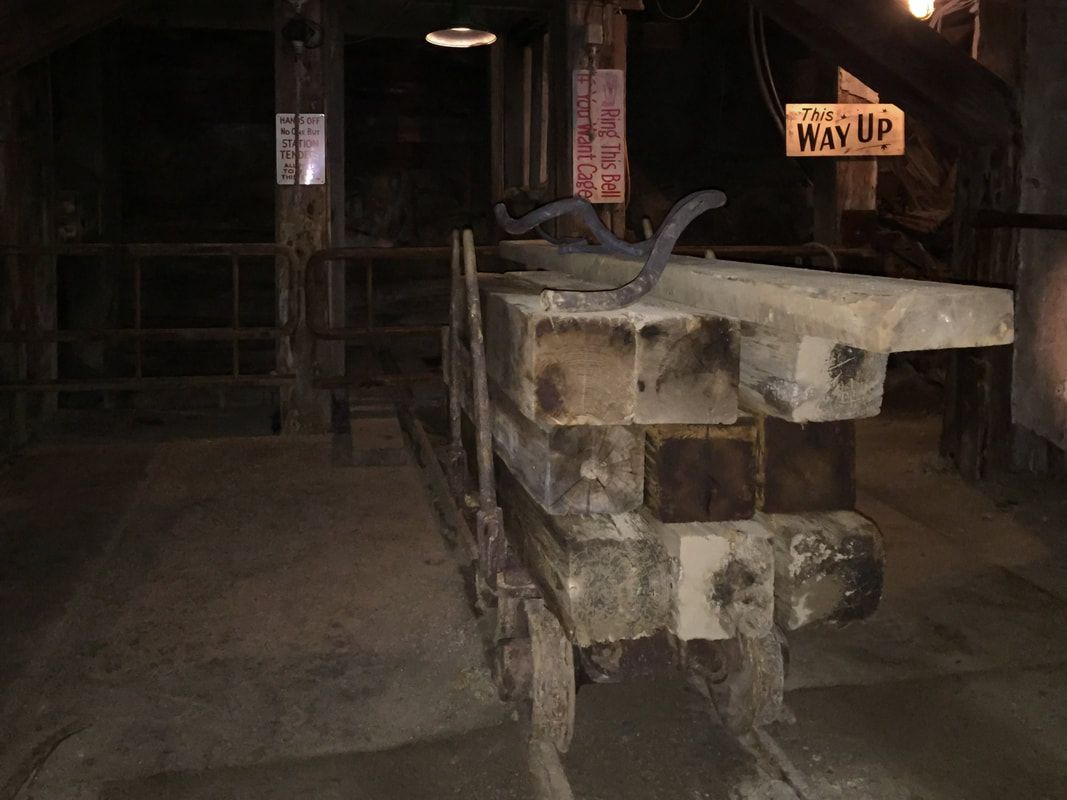
From the mid 1800’s to 2000 the Butte area was synonymous with mining: open pits, placer, vein and block cave mining. It’s estimated it has 10,000 miles of underground workings (vertical shafts & main horizontal openings)! Fun fact: in the days when mules were used to pull carts along the underground rail lines, they were arm wrestled into elaborate slings and hoisted down the main shaft to live out the remainder of their lives deep below, in arguably better conditions than their human counterparts.
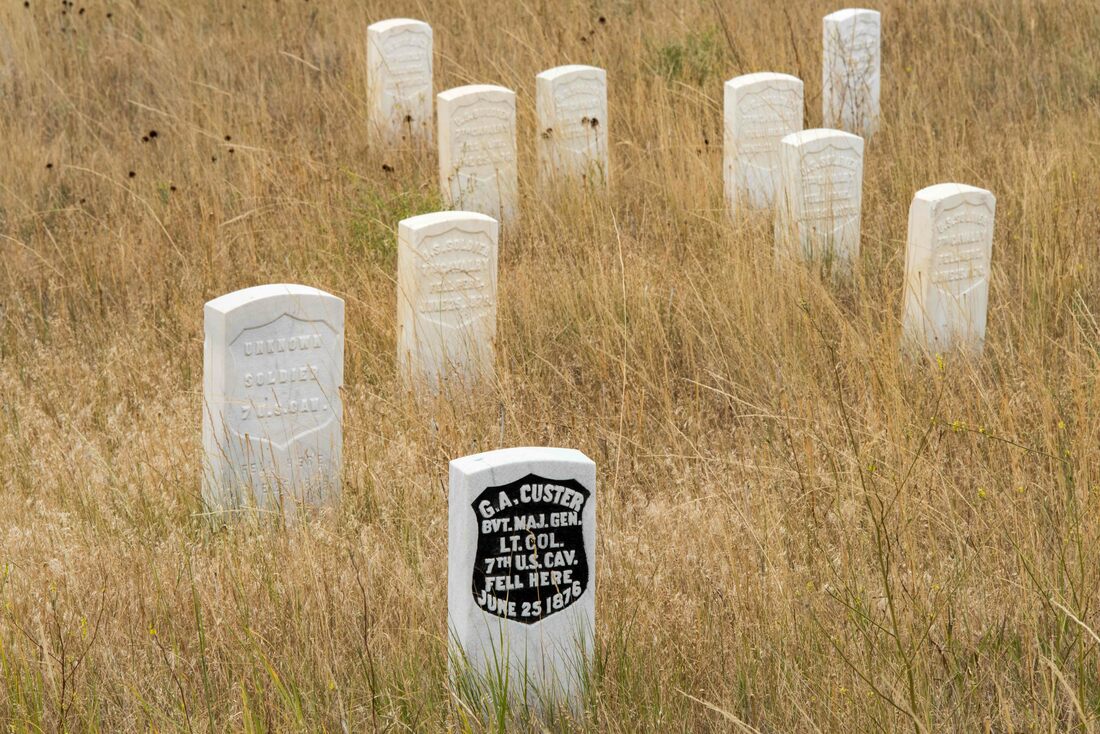
Custer's Last Stand at the Little Bighorn Battlefield Memorial...To the "Indians" (American terminology) who wanted to continue their nomadic way of life, living in treaty reservations wasn't tolerable. At the same time, there was a push for pioneers to expand into the west. Clashes ensued leaving the army to intervene to try to enforce relocation to the reservations. Chief Sitting Bull organized seven thousand Indians to set up an off-reservation village, believing their number would be too great to be challenged by the army. In June 1867 when Custer and his troops stumbled on them, his small army was so outnumbered its defeat took only 2 days. Seeing the open land with only knee high grass to hide behind, it’s amazing they lasted that long. Losses: 7th Cavalry 263, Indians approx. 40-100. (Crow Agency, Montana, Aug 17)
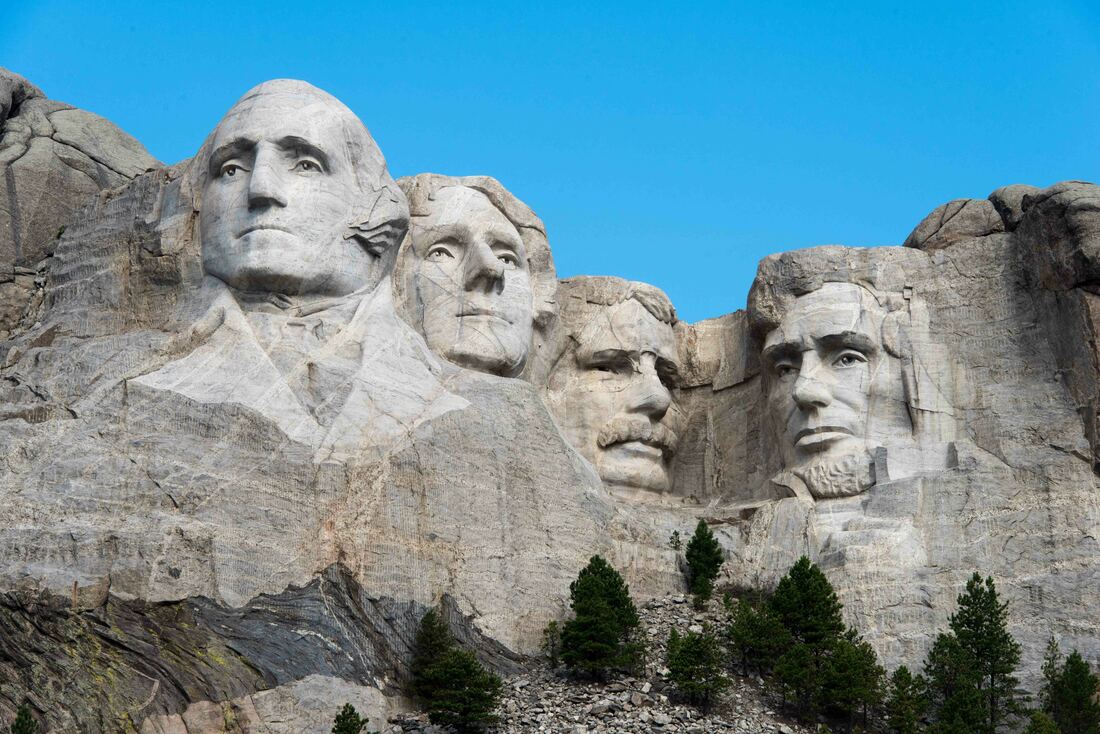
For the best lighting, we woke at pre-dawn to arrive at the Mount Rushmore Memorial. Only a handful of us quietly took in the awesomeness of the site. Each of the four presidents was chosen for their part in the evolution of the US: George Washington (founding), Thomas Jefferson (growth), Abraham Lincoln (preservation) and Theodore Roosevelt (development). Begun in 1927, fourteen years later the last face was unveiled. (Black Hills Nat'l Forest, South Dakota, Aug 15)
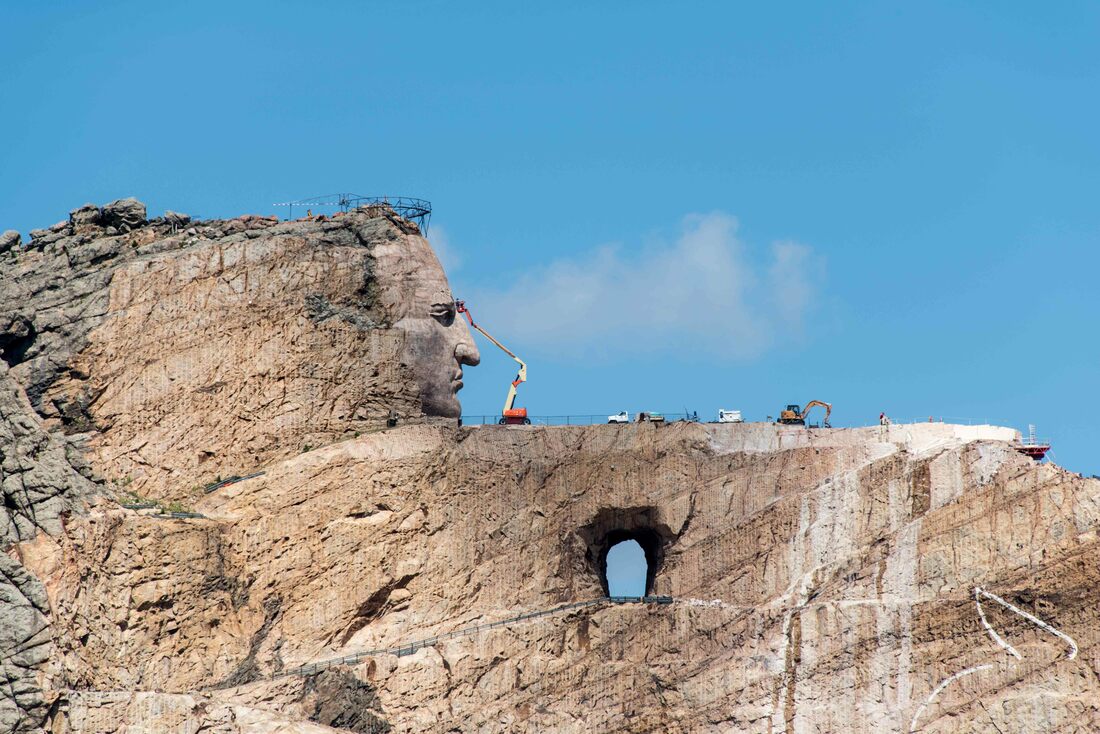
During the construction of Mt Rushmore, the Indian elders felt their heritage should also be honoured which lead to the ongoing mountain sculpture of Crazy Horse on his mount. As one of the warriors who fought against Custer, he is considered an American Indian icon. The project has been ambitious - Mt Rushmore will fit in Crazy Horse's flowing hair - and isn’t government funded. First begun in 1948 by one man, it currently has 12 carvers working on the rock and may not be completed for another century. Above: present day & projected. (Crow Agency, Montana, Aug 17)
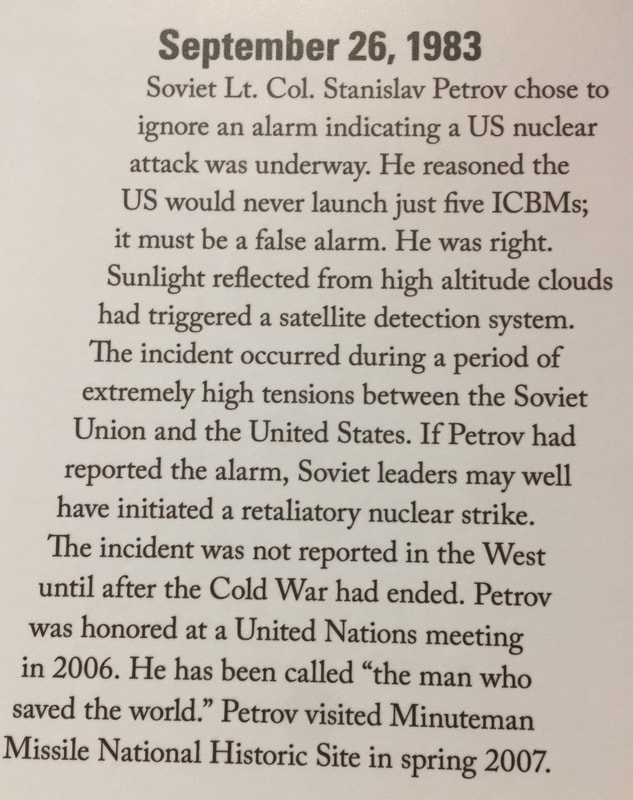
With the recent North Korea nuclear war sabre rattling, our visit to the Minuteman Missile Nat'l Historic Site seemed timely. It was filled with artifacts about the 1949-1991 Cold War, including several naïve duck-and-cover and personal bunker type coping strategies. One exhibit outlined six instances when the USSR and the US were on the verge of launching nuclear weapons based on human or equipment error - frightening to think how these moments could have so drastically changed the course of history. (Cactus Flat, South Dakota, Aug 15)
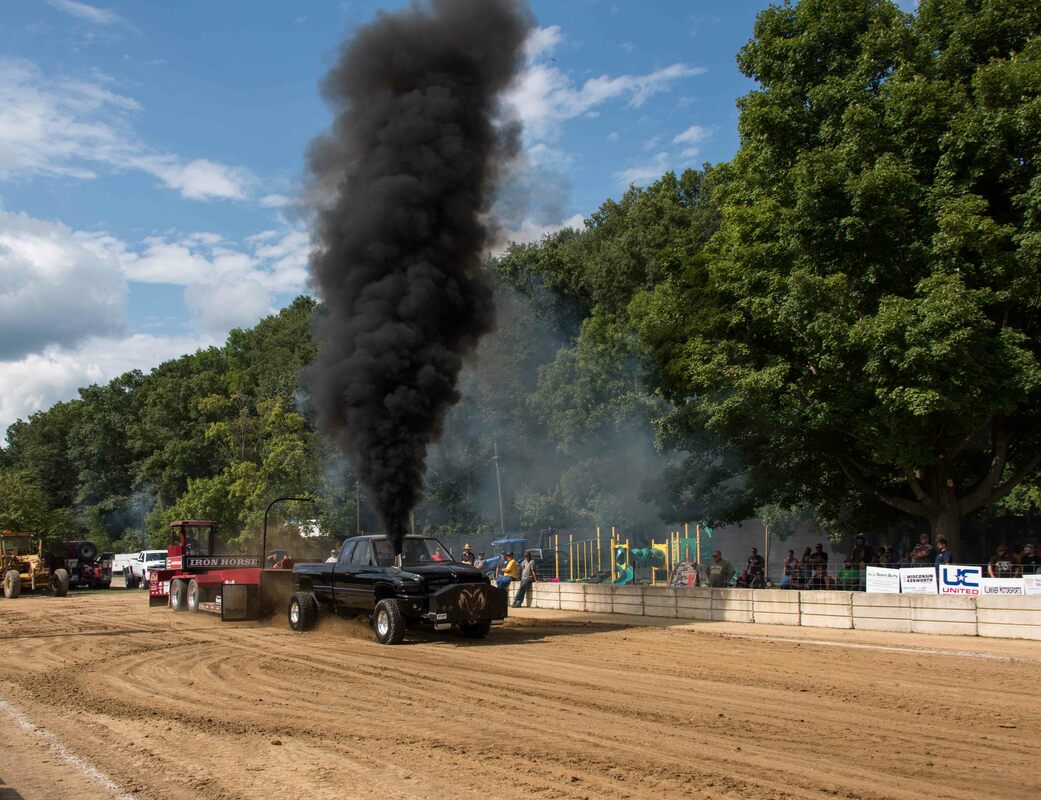
We rode the Elroy-Sparta rail-to-trail which had the distinction of being the first where the US decided to put abandoned railbeds to good public use (1965). The day we were there the trail had to detour around this truck and tractor pull event. The black of the smoke was only outmatched by the ear-splitting noise from the tricked-out engines. (Norwalk, Wisconsin, Aug 13)
